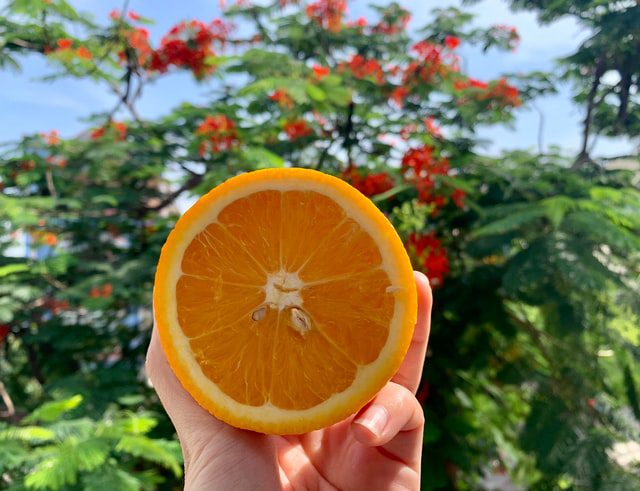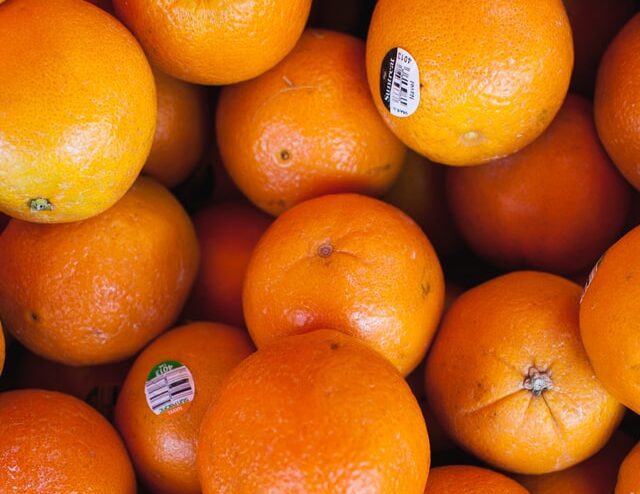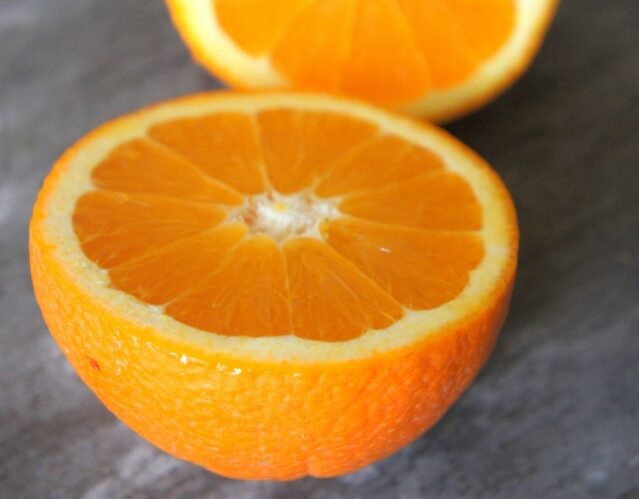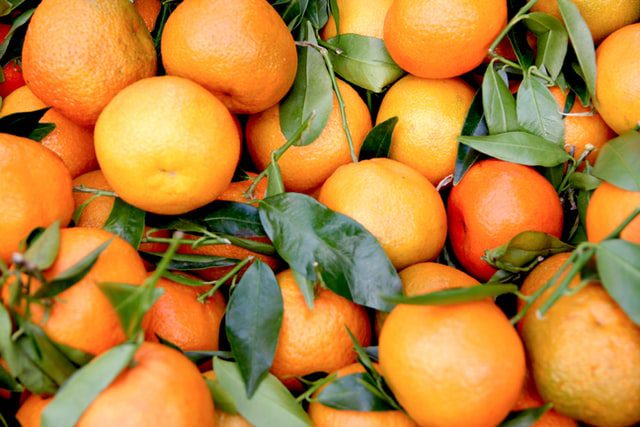The protagonist of our today’s discussion is – orange. After reading this article, you will always know how to choose delicious and juicy oranges perfectly suitable for juicing.
Oranges contain many vitamins (A, group B, C) and minerals (sodium, potassium, phosphorus, iron, calcium, and magnesium). It also contains very high amounts of ascorbic acid, which even exceeds the daily requirement for an adult person. However, to enjoy not only its nutritional value but also juicy and pleasant taste – it is important to know how to choose the right oranges.
1. How do you pick the best oranges for juicing?
There are different types of oranges. They differ in taste, skin thickness, and juiciness. Dessert oranges are often thick-skinned and rich in flavor; they are better when consumed whole instead of juicing them. Juicing oranges are thin-skinned and very juicy, which is why they are more suitable for juicing purposes.
When choosing oranges, people often decide by their color – if it has a rich orange color, it is considered good, while greenish ones turn out to be sour and not ripe. Of course, quality oranges usually have a consistent, bright color. However, color is not the most important factor in selecting oranges because some greenish oranges can be quite ripe and sweet as well. Moreover, the rich orange color can be reached artificially, which is not what we want. The point is that the sweetness and ripeness of oranges do not always depend on their color. Their peel turns orange when exposed to the heat and sun. The greenish fruit hanging on the tree can already taste quite sweet.
Below we share the main factors to take a look at while choosing oranges:
1) Before buying oranges, you can weigh one in your hand. The juicy fruit will seem heavier. If it is light, it is dry inside.
2) If you are not in a cold place, you can smell the orange. Quality oranges always have a pleasant aroma if they are fresh and ripe, while unripe oranges have a faint smell.
3) Large oranges are usually less sweet than medium or small ones. You should not chase the largest fruit unless this type of oranges is large itself, like in the case of Navel oranges. Overgrown oranges are often dry and have a rather mediocre flavor. Moreover, a large fruit has fewer nutrients and does not taste as good as the small or medium one.
4) If the peel is uneven, it is likely to be thick, and the orange may be dry and sour. An exception would be Jaffa oranges, which always have a thick and uneven texture. If the peel looks smooth, then the skin is likely to be thin and the orange – sweet and juicy.
5) The skin of the fruit should be without various spots and dents; the presence of mold is also unacceptable. Both too hard and too soft oranges should be avoided. If it is soft and wrinkled, it has begun to spoil or dry out from the inside. If the fruit is too hard, it is also unpalatable.
6) Rough, excessively orange skin or yellow spots indicate that the fruit has been picked green and treated with chemicals to achieve a beautiful color.
7) If you have sour oranges, most likely it is because they were picked green. You shouldn’t wait for them to ripen, as you may do with bananas. If they are sour, they will stay sour. Such oranges are not good for juicing.
2. Top 6 best juicing oranges
1. The best for juicing: Valencia
This type of orange came from sunny Spain. Valencia variety also grows in other warm countries and is actively grown on an industrial scale. Its peel is quite thin and has a dark orange color with slightly noticeable red dots. The flesh is sweet and juicy, making it one of the most popular choices when it comes to juicing. They can be easily found almost in any supermarket.

2. The most popular: Navel
Navel oranges are among the most popular citrus fruits in many countries. There are different varieties of this orange type, such as “Thomson Navel,” “Washington Navel,” and “Cara Cara Navel.” These oranges are mostly grown in Spain and the United States. They are usually large and have a kind of “navel” on their tops. The peel is often glossy, smooth, and thin; they have a bright orange color. The taste is intense, sweet with some sour notes, delightful. This orange is aromatic and very juicy. The seeds are rare, and the skin is easy to peel. It is a great choice for both uses – juicing and eating.

3. The healthiest: Blood orange
They grow mainly in their homeland – the south of Italy, in Sicily. But they are also very popular in other countries and are actively grown in the United States and Spain.
The best red oranges are considered Sicilian ones. There are few variations of them; the most known are “Tarocco”, “Sanguinello”, “Moro”. These are medium-sized fruits. The skin has an orange color, sometimes with slightly reddish spots. Seeds are rare. It has a red or even maroon juicy flesh, and sometimes it is orange with red streaks. These oranges have a high content of anthocyanins – antioxidants that reduce the risk of cardiovascular and other diseases.
Also, red oranges are rich in iron and have even more vitamins than ordinary oranges, and they are considered particularly useful. Their taste is sweet-sour (sweeter); the flavor is rich and very pleasant. Red oranges can be eaten, or you can make a perfect juice from them.

4. The largest: Jaffa
These oranges came from Israel. They are large in size, with an embossed and very thick peel, but a lovely and pleasant taste. They are peeled very easily. They can be more expensive than other types of oranges due to lower availability in some countries.
5. The sweetest: Mosambi
If you are looking for particularly sweet oranges, you can ask for such options as “Mosambi”, “Sukkari”, which normally grow in India and Pakistan. They are very sweet. They can serve as a great dessert, but not everyone likes its juice due to the lack of sourness.

6. The easiest to peel: Clementine
These are small varieties. They have a sweet, pleasant taste, which makes them a great snack. They are easily peeled and have very few seeds. However, if you decide to juice them, you will need quite a big amount of clementines due to the small size.

3. Why are some oranges sour?
We are sure everyone wants sweet oranges, not sour ones. The healthiest citrus fruits are those with a sweet flavor. Even lemons are the best when they have a little sweetish, not that sour taste. But we talk about lemons separately in this article.
Why are oranges sour? It mostly depends on the soil in which the orange tree grows. Also, oranges are often picked too green and then treated with chemicals to give them an orange color.
You should be cautious with buying oranges imported from faraway countries. In such cases, they were likely picked green in the belief that they will stay better during transportation. If you are located in Europe, go for Spanish oranges and not the ones from the Americas, and overwise, if you are located in the US.
4. Which oranges are the sweetest?
The sweetest oranges are Mosambi, Moro orange (a type of blood orange) and the Brazilian Navel orange, which got its name because of the protruding nub that resembles a human navel. Some say that the bigger is that ¨navel¨- the sweeter is the orange.
When it comes to size, the sweetest oranges are the medium-size ones. Large oranges can be dry and tasteless, while small oranges can be sour.
Choosing delicious oranges may seem difficult at first. But by experimenting, you’ll get used to it very quickly. Buy a few different oranges and taste them. Great! Now we hope you can see the difference between different varieties and can choose the juiciest ones!
Liked the article? Share it!





Recent Comments